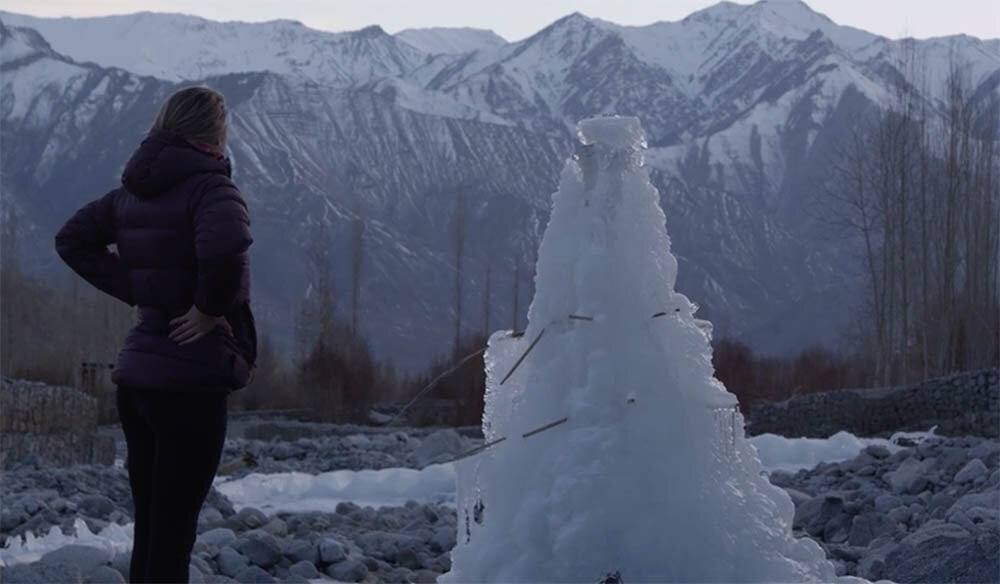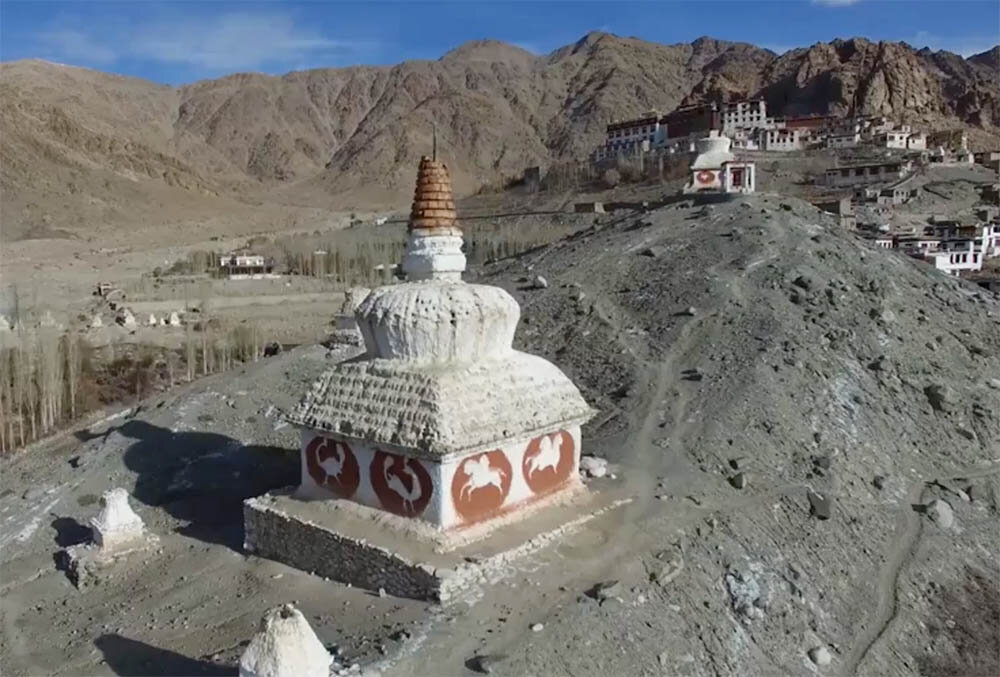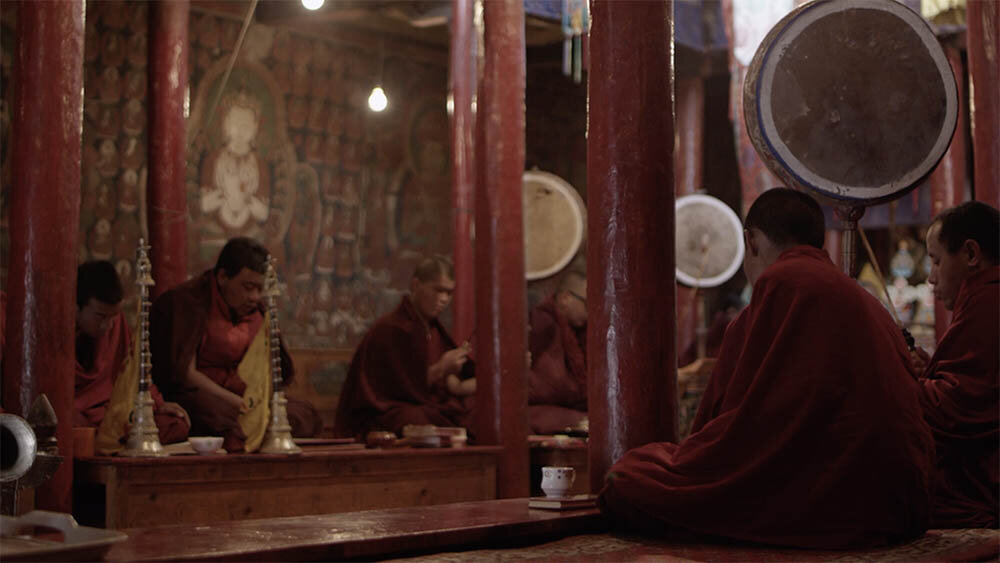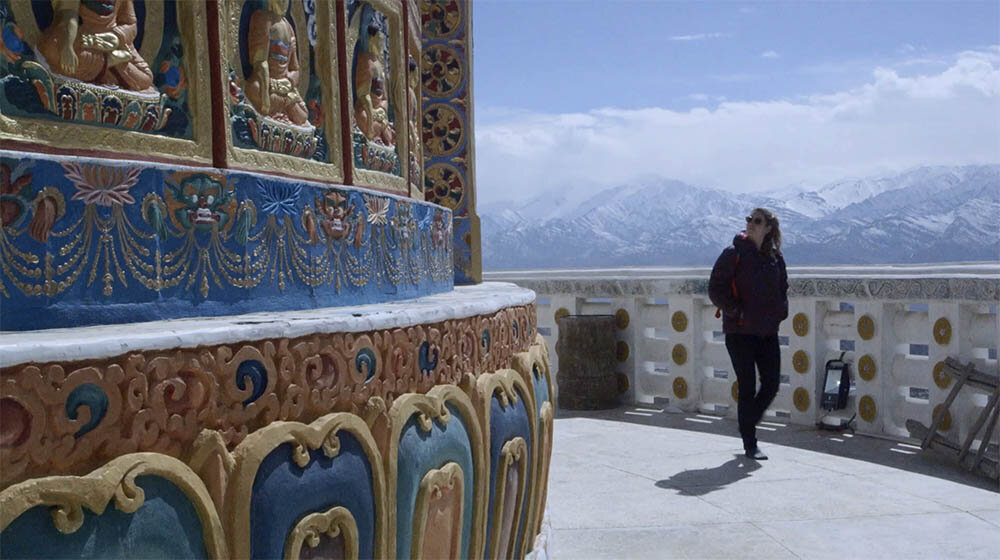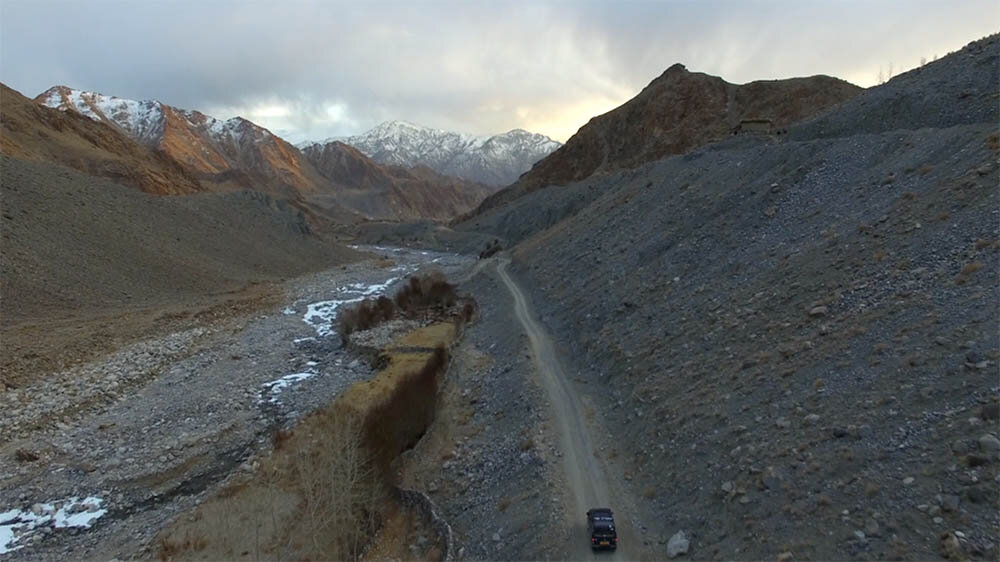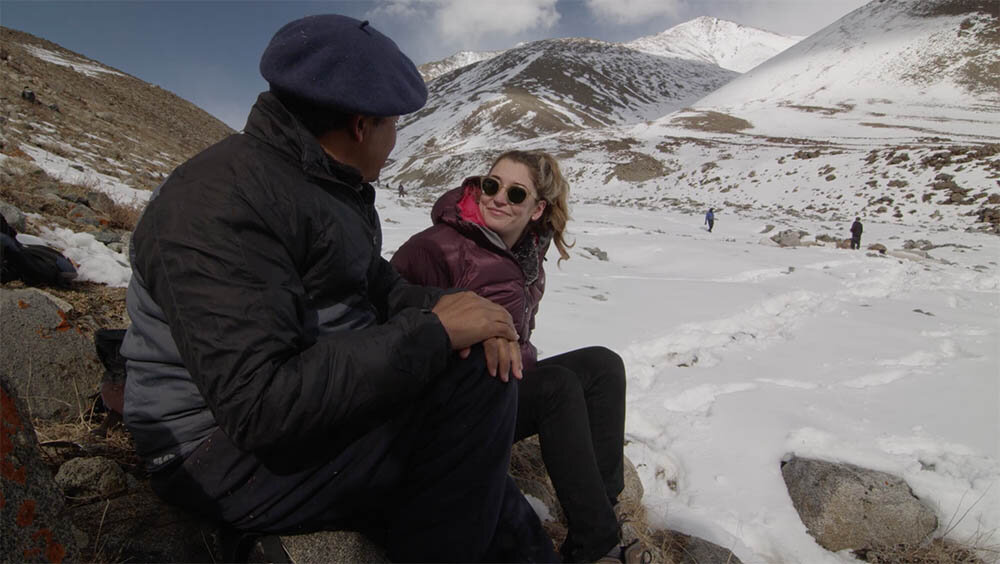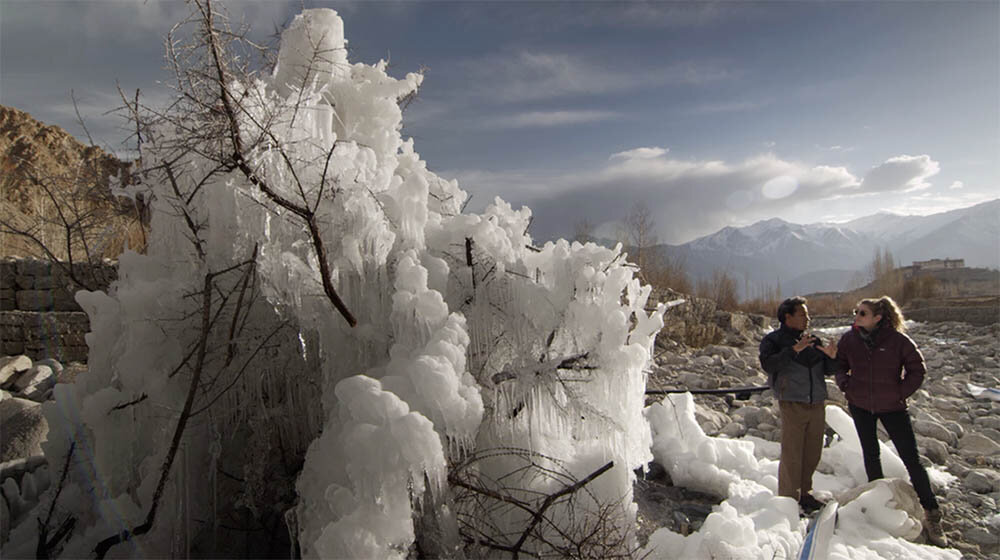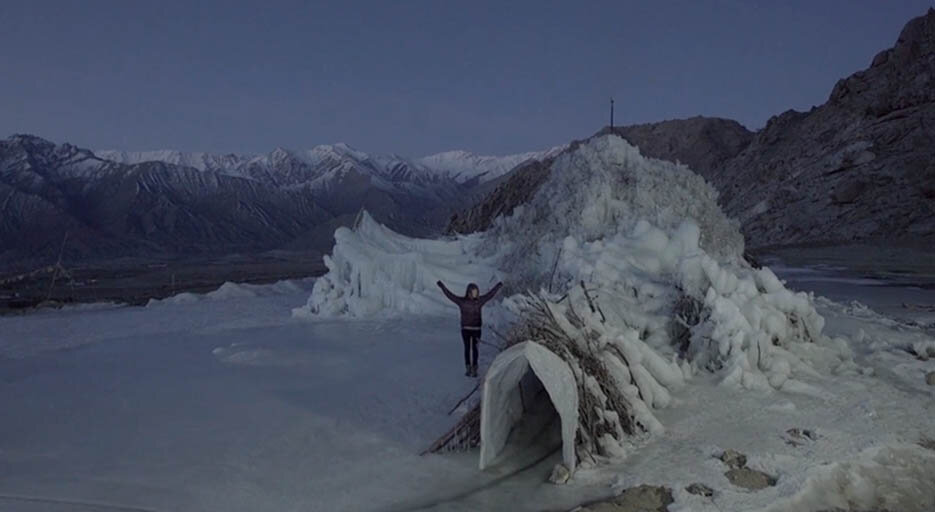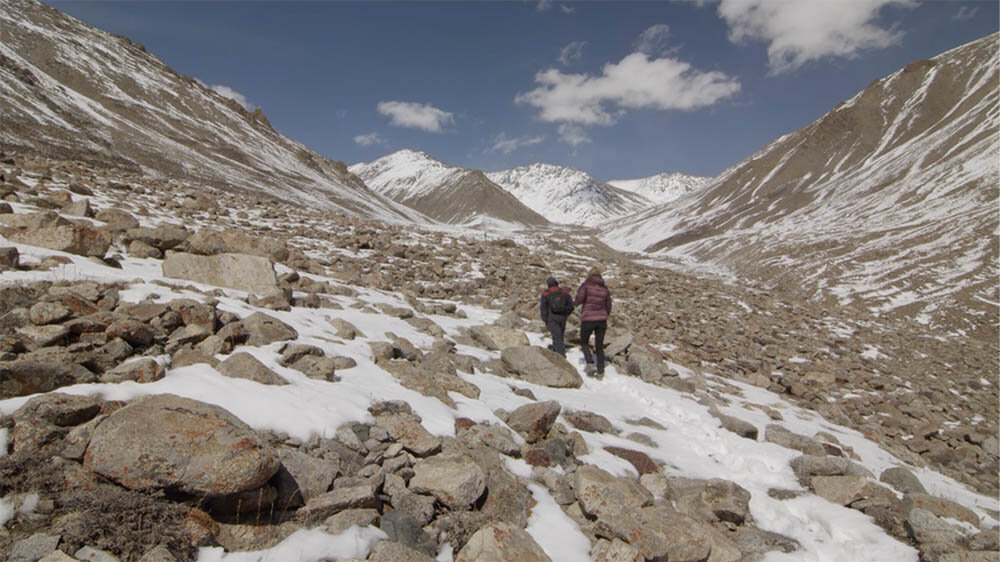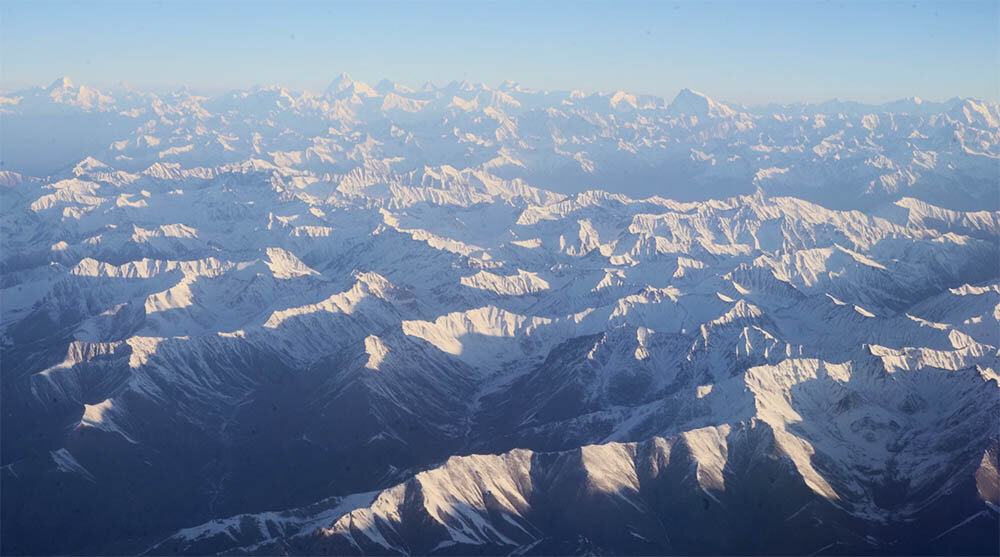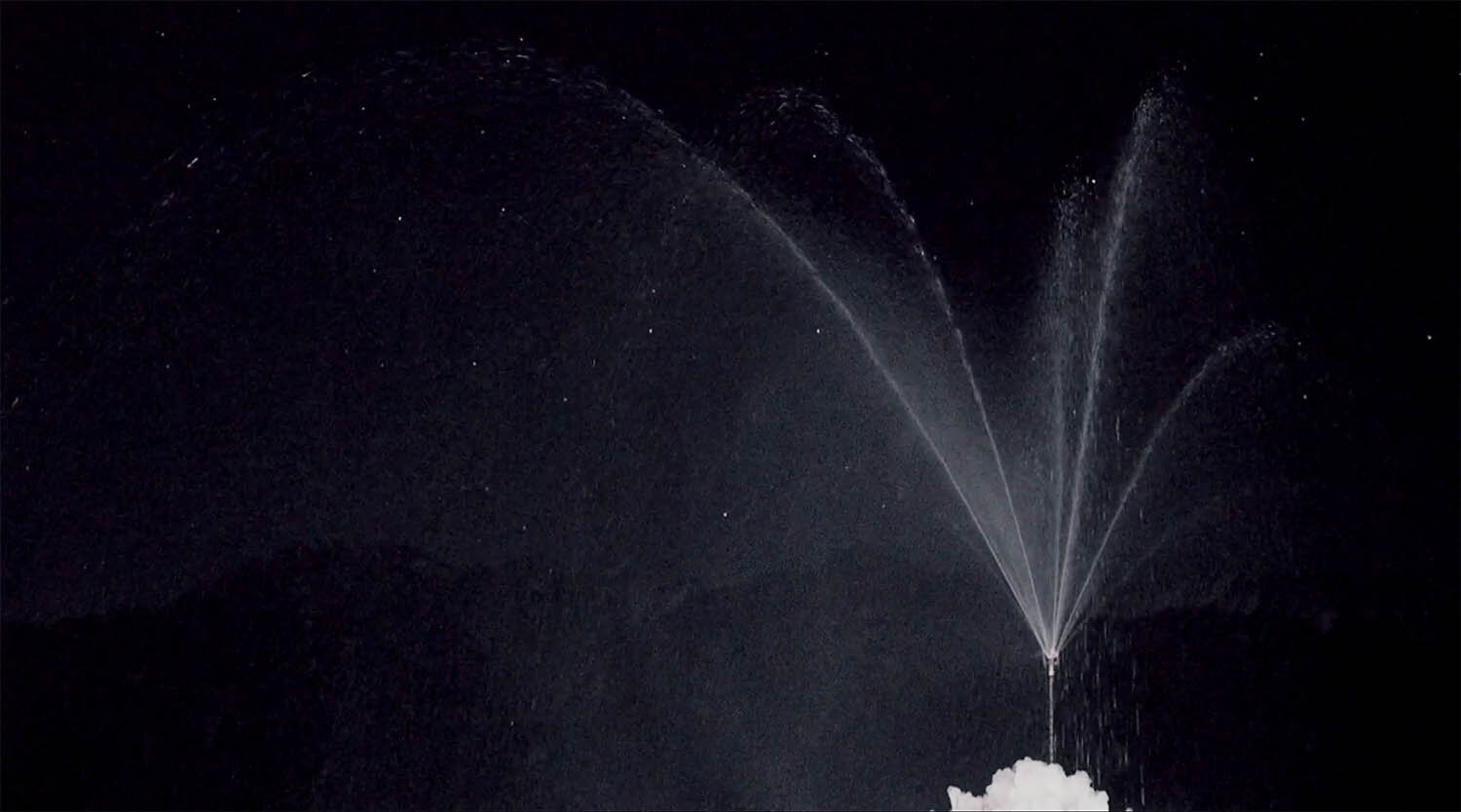ADAPTATION: Ladakh
Ladakh is a mountainous high-altitude desert in Jammu and Kashmir, the northernmost state of India. With scarce access to water, the region is extremely vulnerable to changes in climate. The effects of global warming are disproportionately felt in this area, including an overall warming trend across the region and reduced precipitation. Due to these warmer temperatures, glacial melt in Ladakh is rapidly accelerating; particularly in the months of October, November and December. Historically, glaciers would freeze during these winter months and streams would slow to a trickle. This was a good thing, as it kept scarce freshwater resources intact until they were needed in the spring months for planting crops.
As I learned, that is no longer the case. Warmer winters mean that streams and rivers continue to flow with precious freshwater reserves, wasting away down the Indus River valley (and ultimately draining into Bangladesh).
But two men had an idea. In a remarkable effort to capture this excess runoff and save it until the spring, a Ladakhi engineer and a Buddhist monk came together and invented the idea of ‘ice stupas’. By channeling the glacial runoff into giant ice pyramids (ice ‘stupas’), they could freeze and store the freshwater throughout the winter. The ice stupas melt in the spring, providing water to villagers in the critical months of April and May - just when crops and fields need irrigating.
Note: I went to Ladakh with a film crew in 2016 to capture this story, when the Ice Stupa Project was newly forming. They have since gone on to win many awards (including the Rolex Award for Enterprise) and have been covered in several different media outlets. Read this great feature in The New Yorker from 2019.
Melting Glaciers - Losing Water
Sonam Wangchuk, the Ladakhi engineer and mastermind behind the ice stupa project, crosses the riverbed to a newly forming ice stupa. Pipes are visible along the stream bed, which feed the ice stupas with glacial meltwater in the winter months.
Ice Stupas
In the Buddhist tradition, a stupa is a most sacred object. It is usually a mound-like or hemispherical structure that contains notes or relics, and serves as a place for meditation. There are hundreds of thousands of stupas across Ladakh, many of them white (hence the use of the name ice ‘stupa’). In this image, one of the ice stupa team members checks the top of the ice stupa where water exits the pipe, making sure that it has not frozen over.
Nighttime Freezing
Ice stupas “grow” at night, when temperatures drop below freezing. In this image, which was taken in the early hours of the morning, running water sprays out the top of the ice stupa and freezes on the pyramid as the droplets hit the ice mound. An ice stupa can grow a considerable amount in just a few nights if the water flow is reliable and the temperatures are well below zero.
Seasonal Water Storage
Members of the Ice Stupa team re-secure the water discharge pipe at the top of a large ice stupa. As the structure grows in size, the pipe must be continually raised so that the water has enough elevation to spray up and out over the stupa. Some ice stupas can reach up to 90 feet tall.
Photo Credits: Justin DeShields & Devlin Gandy
Capturing this story was made possible thanks to the generous support from the following organizations & people:
National Geographic (grant)
HerRay! Foundation (grant)
SECMOL (Students’ Educational and Cultural Movement of Ladakh)

